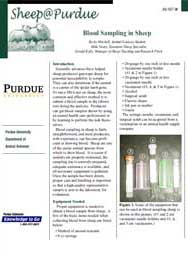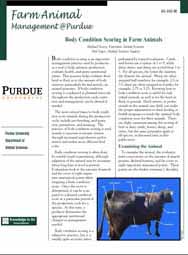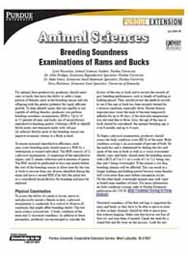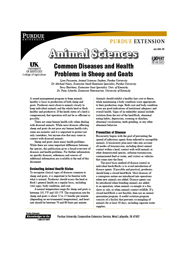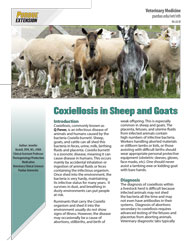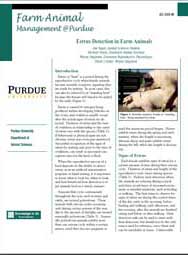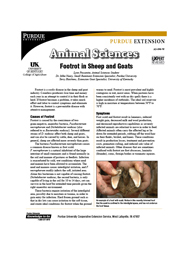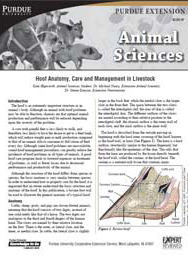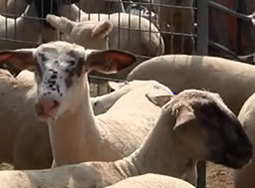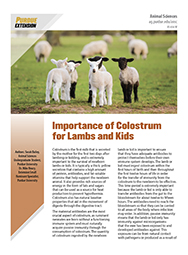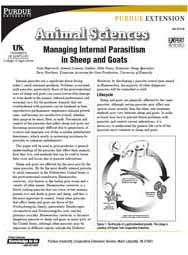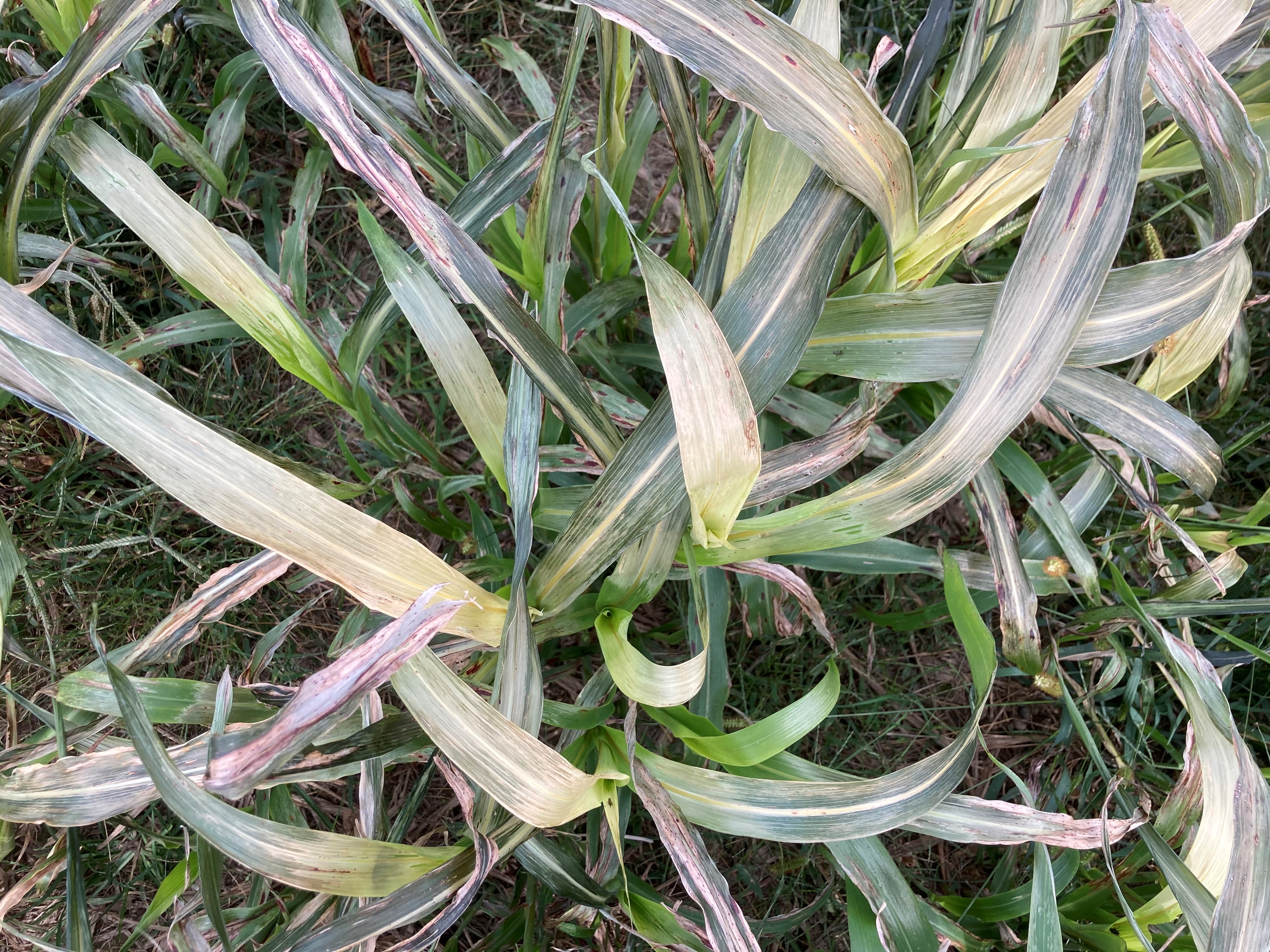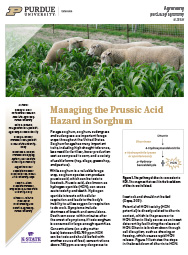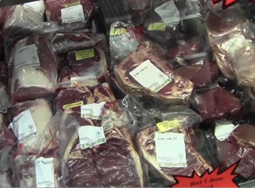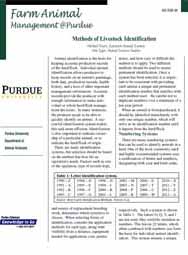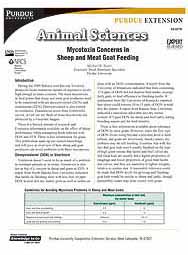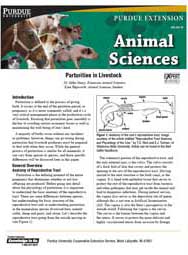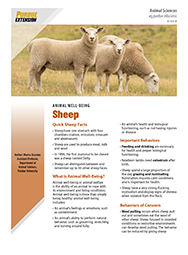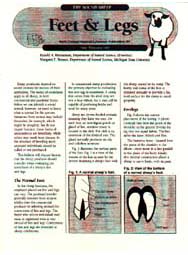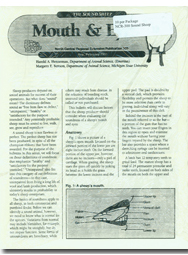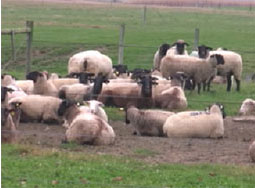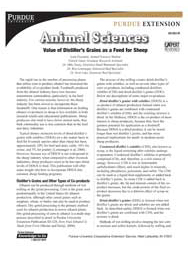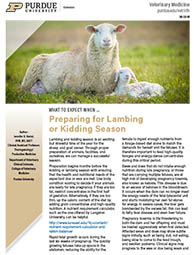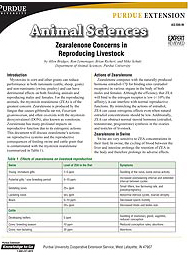Livestock
Sheep
Scientific advances have helped sheep producers genotype sheep for potential susceptibility to scrapie. This publication discusses the equipment needed, the steps to drawing blood, post collection and handling and care o...
Body Condition Scoring in Ewes
This video explains and demonstrates the important concept of body condition scoring in sheep. Body condition scoring is an important management tool to help producers evaluate the nutritional and health status of ei...
Breeding Soundness Examinations of Rams and Bucks
For optimal farm productivity, producers should select rams or bucks that are able to settle a large portion of females early in the breeding season and sire offspring with the genetic potential for rapid, efficient grow...
Common Diseases and Health Problems in Sheep and Goats
A sound management program to keep animals healthy is basic to production of both sheep and goats. Producers must observe animals closely to keep individual animals and the whole herd or flock healthy and productive. Thi...
Coxiellosis in Sheep and Goats
This publication, by a Clinical Assistant Professor in the Purdue College of Veterinary Medicine, calls attention to coxiellosis, an infectious disease that can affect animals and humans. It's a hardy bacteria that ca...
Estrus Detection in Farm Animals
Estrus or "heat" is a period during the reproductive cycle when female animals become sexually receptive, signaling they are ready for mating. This publication provides information about the estrous cycles for various an...
Footrot is a costly disease in the sheep and goat industry. Countless producers lose time and money each year in an attempt to control it in their flock or herd. This publication describes the disease's causes and sympto...
Forage Field Guide, fourth edition
The new fourth edition of this guide contains 324 pages of information for forage and livestock producers and the agricultural industries that serve them. This new edition features updates and changes throughout, includi...
Forage Field Guide, fourth edition (25/box)
This is a box of 25 copies of our popular in-field reference. The fourth edition of this pocket-size, in-field reference provides information for forage and livestock producers and the agricultural industries that serve ...
Hoof Anatomy, Care and Management in Livestock
This publication discusses the complex hoof structure and the role that it plays in the overall health of an animal. A lame animal is not only in pain, but it is an extra expense that most producers cannot afford. This p...
How to Conduct a Fecal Egg Count in Sheep and Goats
This video is about conducting a fecal egg count in sheep and goats.
** The "Free Download" button takes you to this video on YouTube.
All videos and other publications availabl...
Importance of Colostrum for Lambs and Kids
This article advises sheep and goat owners on the importance of colostrum, the first milk produced after birth, which is essential for the survival of newborn lambs and kids. It discusses benefits of using high-qualit...
Managing Internal Parasitism in Sheep and Goats
This paper will be used to give producers a general understanding of the parasites that affect their animals, how they live, and methods that can be used to lower their costs and losses due to parasite infestations....
Managing Prussic Acid in Sorghum
Prussic acid poisoning can be a concern if livestock consume freeze-damaged sorghum plants. This concern can be minimized if management strategies are utilized. This video discusses ways to manage sorghum so prussic acid...
Managing the Prussic Acid Hazard in Sorghum
Sorghum is a valuable forage crop but can produce prussic acid (also known as hydrogen cyanide, HCN), which can be toxic to livestock. In this publication, Purdue and Kansas State researchers discuss characteristics affe...
Meat Processing Options for Small Farms - video
Purdue experts discuss what small farms need to consider about meat processing.
**The "Free Download" button takes you to this video on YouTube.
All videos and other publicat...
Methods of Livestock Identification
Animal identification is the basis for keeping accurate production records of the herd/flock. This publication provides information about numbering systems and identification methods such as ear tagging, freeze branding,...
Mycotoxin Concerns in Sheep and Meat Goat Feeding
During the 2009 Indiana corn harvest, livestock producers heard numerous reports of mycotoxin levels high enough to cause concern. The main mycotoxins in feed grains that sheep and meat goat producers need to be concerne...
This publication covers parturition—the process of giving birth—in livestock. It covers the anatomy of the reproductive tract, fertilization and pregnancy, as well as specifi information related to each speci...
This information sheet provides an overview of sheep well-being including how to provide appropriate care, interpret sheep behavior, and identify signs of poor well-being.
Format: PDF
<...
This bulletin discusses factors that the sheep producer should consider when evaluating the soundness of a sheep's feet and legs. ...
The Sound Sheep: Mouth & Eyes (10/pkg)
This bulletin discusses factors that sheep producers should consider when evaluating the soundness of a sheep's mouth and eyes. The bulletin addresses structural soundness that is normal for the species and any variation...
This expert reviewed video depicts the proper way to tube feed small lambs. You'll learn when it's appropriate to use tube feeding, the necessary equipment, and proper techniques. Once inserted, there are two ways to adm...
Using CIDRs in the Sheep Flock
This expert reviewed video depicts the proper way to use CIDRs in a synchronized Sheep Breeding Program. You'll learn the equipment needed and the proper procedure for using the device in sheep and goats.
Value of Distiller's Grains as a Feed for Sheep
The rapid rise in the number of processing plants that use corn to produce ethanol has increased the availability of co-product feeds. Feedstuffs produced from the ethanol industry have now become mainstream commodities,...
What to Expect When: Preparing for Lambing or Kidding Season
Lambing or kidding season is an exciting, but stressful, time. Proper preparation is important. In this publication, part of the "What to expect when series" by Purdue University veterinarians, nutrition, pregnancy, vacc...
Zearalenone Concerns in Reproducing Livestock
Mycotoxins in corn and other grains can reduce performance in both ruminants (cattle, sheep, goats) and non-ruminants (swine, poultry) and can have detrimental effects on both finishing animals and reproducing males and ...









